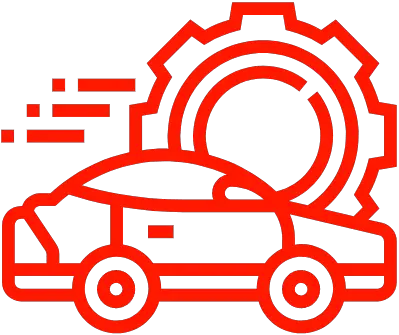Troubleshooting Tips if Your Car Won’t Start After Replacing the Alternator
After replacing an alternator, a car may fail to start due to several possible causes. The most common causes of this issue include incorrect installation of the alternator, faulty connections, or a faulty battery. If the alternator was incorrectly installed, it may need to be removed and reinstalled in order to properly work with the car’s electrical system. Additionally, all connections should be checked to ensure that they are properly secured and that there is no corrosion or debris inhibiting the flow of electricity. Finally, if the issue persists then it is likely that the battery itself is faulty and needs to be replaced in order for the car to start again.
Automobile – Car Won’t Start After Replacing Alternator
Alternator Replacement and Car Won’t Start
When it comes to replacing the alternator in your car, there are a few common questions that come up. Most people wonder why their car won’t start after replacing the alternator, and what they can do to fix it. The alternator is an essential component of a car’s electrical system, and it is responsible for generating power to the battery and other electrical components. When it fails, or needs to be replaced, it can cause the car to not start.
Diagnosing Reasons for Car Not Starting After Alternator Change
In order to diagnose why your car won’t start after replacing the alternator, there are a few steps you should take. First, make sure that your battery is fully charged. If not, it could be the reason why the car won’t start. You can charge the battery using a battery charger or jump starting it from another car. Once you have charged your battery, you should test the alternator and voltage regulator to make sure they are functioning properly. If everything looks good there, then you should check the electrical system for any possible issues that may be causing your car not to start.
What To Do When Car Won’t Start After Replacing The Alternator
If all of these steps have been taken and your car still won’t start after replacing the alternator, then there are a few troubleshooting steps you can take to try and fix the problem. These include checking for faulty wiring or other components that may need to be replaced in order for your car to start again. You may also want to check any fuses or relays that could be causing an issue with your electrical system as well as cleaning any corrosion off of any of these components as this could also be preventing your car from starting properly.
Professional Mechanic Assistance For Car Won’t Start After Replacing The Alternator
If all of these steps have been taken and you still cannot get your car started after replacing the alternator, then it may be time to call in a professional mechanic who can help diagnose and repair any issues with your vehicle’s electrical system in order for it to start again properly. It is important that if you do call in a mechanic for assistance that they have experience in dealing with cars that have had their alternators replaced as this will ensure they know how to best diagnose and repair any issues related to this type of repair job.
Common Warning Signs Of A Failing Alternator Before It Needs To Be Replaced
It is important that before an alternator needs replacement that drivers pay attention to some warning signs which could indicate an issue with their vehicle’s electrical system such as dimming or flickering headlights and instrument panel lights as well as loud whining or grinding noises coming from their engine compartment which could indicate an issue with their vehicle’s alternator. By paying attention and addressing these warning signs early on drivers can save themselves time and money by getting their vehicle serviced before having to replace their entire alternator unit itself which can cost significantly more than just getting simple repairs done on smaller parts of their vehicle’s electrical system such as wiring or fuses which may just need cleaning or replacing instead of having them completely replaced outright.
Choosing Quality Parts When Replacing an Alternator
When replacing an alternator, it is important to use quality parts for your vehicle. Using parts of inferior quality can lead to further problems and may even void the warranty of your vehicle. To ensure that you get the best quality parts for an alternator replacement, check the reviews from other users and research the supplier to find out their reputation. Look for certifications from accredited automotive organizations to ensure the parts are tested and up to industry standards. You should also ensure that the part is compatible with your vehicle by checking with a mechanic or online resources.
How to Replace an Alternator Yourself
Replacing an alternator can be done at home with some basic tools and knowledge of car mechanics. Before attempting this task, ensure that you have all the necessary tools such as a wrench set, ratchet set, wrench extensions, and a voltmeter. If you’re unfamiliar with car mechanics then it’s best to seek help from a certified mechanic or take a class on car repair beforehand. Additionally, read through your owner’s manual as this will provide step-by-step instructions on how to replace an alternator.
Tools Needed to Replace an Alternator
In order to replace an alternator yourself, you will need certain tools such as pliers, wire cutters/strippers, a ratchet set with sockets of various sizes, wrenches in different sizes (metric and standard), screwdrivers (flathead and Phillips) as well as torque wrench if available. You may also need some specialized tools depending on your make and model of car including pulley puller or bolt remover. It is advisable to check beforehand what tools are needed by referring to your owner’s manual or consulting a local mechanic shop before attempting this task yourself.
Step-by-Step Guide on How to Replace an Alternator Yourself
First things first: disconnecting the battery cables from the battery terminals in order to reduce any risk of electric shock during the replacement process. Once done, locate the alternator which is typically located near the top of engine bay near either side of radiator fan or air conditioning compressor in most vehicles (for more specific information on where it is located within your particular model refer back to the owner’s manual). Disconnect all wires connected to it including wires connected directly into terminals as well as any bolts that secure it in place before removing entirely from engine bay.
Next inspect any pulleys connected onto shaft of alternator before removing them as they may need replacing too during this process (typically they are labeled if they need replacing). Once removed reinstall new alternator ensuring that all bolts and wiring connections secure properly before reconnecting battery cables back onto battery terminals in same way they were disconnected at start of process (e.g positive terminal cable first then negative terminal cable). Finally start engine and test functionality by checking voltage output with voltmeter which should be between 13-14 volts depending on make/model vehicle being repaired – if voltage output not at expected level then repeat steps above until problem rectified!
FAQ & Answers
Q: What are some of the possible reasons why my car won’t start after replacing the alternator?
A: Some of the possible reasons why a car won’t start after replacing an alternator can include issues with the battery not being fully charged, faulty wiring or other components, or problems with the alternator or voltage regulator.
Q: How can I diagnose why my car won’t start after replacing an alternator?
A: When diagnosing why a car won’t start after replacing an alternator, it is important to make sure that the battery is fully charged, test the alternator and voltage regulator, and check the electrical system for any possible issues.
Q: What should I do if my car won’t start after replacing an alternator?
A: If your car won’t start after replacing an alternator, it is important to troubleshoot steps to try and fix the problem. This may include checking various electrical components and wiring, as well as possibly needing to replace faulty parts. If all else fails, a professional mechanic should be called for assistance.
Q: What are some common warning signs of a failing alternator before it needs to be replaced?
A: Common warning signs of a failing alternator before it needs replacement can include dimming or flickering headlights and instrument panel lights, loud whining or grinding noises coming from the engine compartment, difficulty starting your vehicle, or battery light appearing on your dashboard.
Q: How do I choose quality parts when replacing an alternator?
A: When choosing quality parts when replacing an alternator, it is important to make sure that you are choosing parts that will fit your specific make and model of vehicle. It is also recommended to purchase new parts from reputable sources rather than used ones from questionable sellers.
In conclusion, when a car won’t start after replacing the alternator, it could be due to several possible causes. It could be a faulty connection between the alternator and battery, or a damaged alternator belt, or a loose wire connection or even an issue with the battery itself. It is important to check all of these components before making any assumptions and ruling out any other potential issues. If the problem persists after checking all these components then it is best to seek professional help from a qualified automotive technician.
Author Profile

-
With more than 30 years in the bicycle industry, I have a strong background in bicycle retailing, sales, marketing and customer service. I have a passion for cycling and a dedication to excellence. As a manager, I worked diligently to increase my capabilities and responsibilities, managing up to eleven mechanics (at Palo Alto Bicycles) and later as a working partner in my own store.
As the shop owner of Spoke n’ Word Cycles in Socorro, NM, the success of the mission was my responsibility, which I pursued passionately since we opened in 2003 through the spring of 2011. I am adept at managing owned and loan inventory, preparing weekly & annual inventory statements, and managing staff. The role as managing partner also allowed me tremendous freedom. I used this personal freedom to become more deeply involved in my own advancement as a mechanic, to spearhead local trail building, and advocating for cycling both locally and regionally.
As a mechanic, I have several years doing neutral support, experience as a team mechanic, and experience supporting local rides, races, club events. I consistently strive to ensure that bicycles function flawlessly by foreseeing issues and working with the riders, soigners, coaches and other mechanics. Even with decades of experience as a shop mechanic and team mechanic, and continue to pursue greater involvement in this sport as a US Pro Mechanic, and UCI Pro Mechanic.
Latest entries
- July 26, 2023BodyFind the Best Grill for Your 2007 Toyota Tacoma – A Complete Guide
- July 26, 2023BodyUpgrade Your Ford Escape with the Best 2008 Grill – Here’s How!
- July 26, 2023Bumper Stickers, Decals And MagnetsBest Chevy 1500 Door Emblem: Upgrade Your Truck with a Stylish Emblem
- July 26, 2023Marker Light AssembliesGive Your 2008 Dodge Dakota a Makeover with the Best Grill Upgrade
